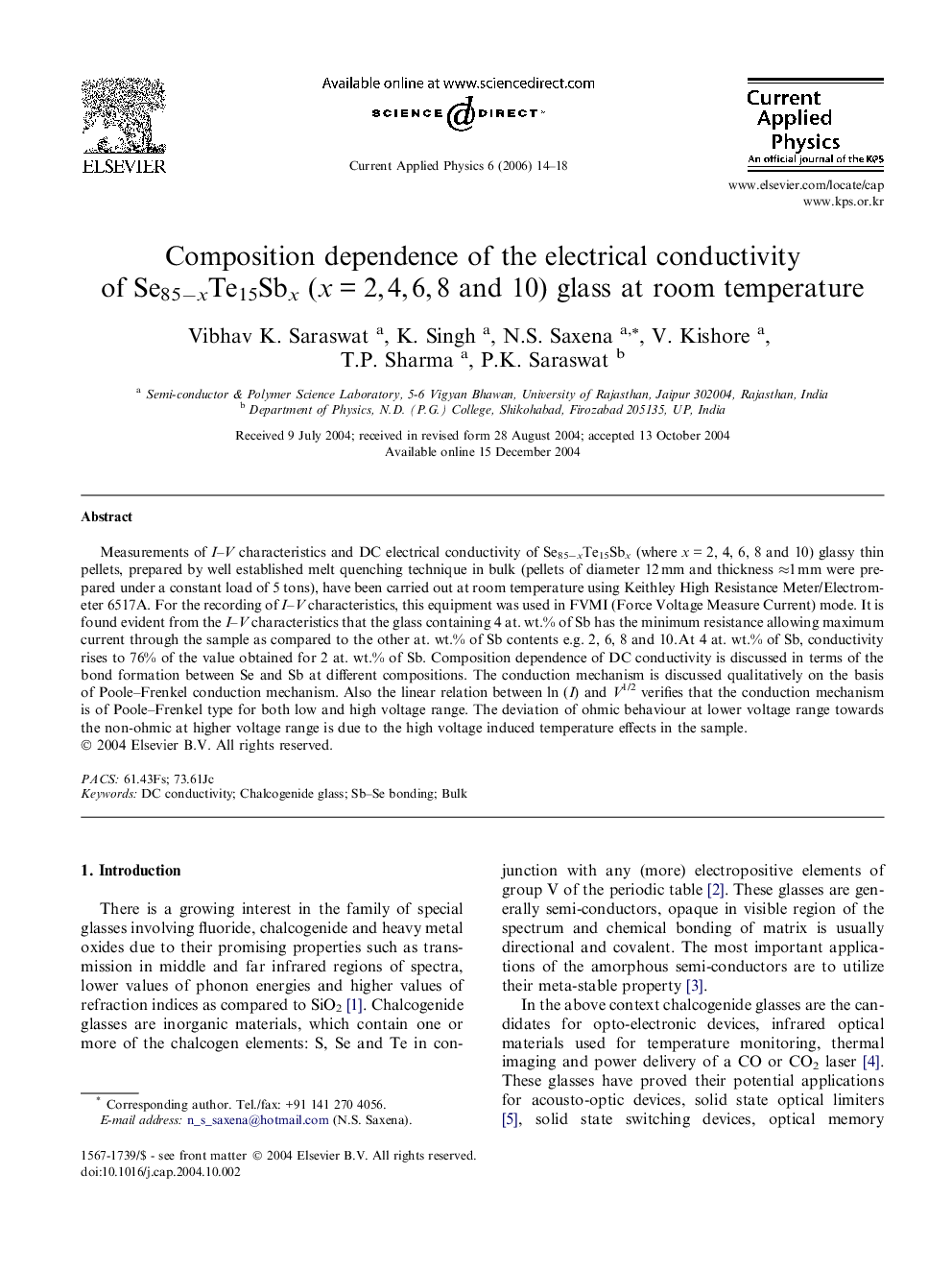| Article ID | Journal | Published Year | Pages | File Type |
|---|---|---|---|---|
| 1788567 | Current Applied Physics | 2006 | 5 Pages |
Measurements of I–V characteristics and DC electrical conductivity of Se85−xTe15Sbx (where x = 2, 4, 6, 8 and 10) glassy thin pellets, prepared by well established melt quenching technique in bulk (pellets of diameter 12 mm and thickness ≈1 mm were prepared under a constant load of 5 tons), have been carried out at room temperature using Keithley High Resistance Meter/Electrometer 6517A. For the recording of I–V characteristics, this equipment was used in FVMI (Force Voltage Measure Current) mode. It is found evident from the I–V characteristics that the glass containing 4 at. wt.% of Sb has the minimum resistance allowing maximum current through the sample as compared to the other at. wt.% of Sb contents e.g. 2, 6, 8 and 10. At 4 at. wt.% of Sb, conductivity rises to 76% of the value obtained for 2 at. wt.% of Sb. Composition dependence of DC conductivity is discussed in terms of the bond formation between Se and Sb at different compositions. The conduction mechanism is discussed qualitatively on the basis of Poole–Frenkel conduction mechanism. Also the linear relation between ln (I) and V1/2 verifies that the conduction mechanism is of Poole–Frenkel type for both low and high voltage range. The deviation of ohmic behaviour at lower voltage range towards the non-ohmic at higher voltage range is due to the high voltage induced temperature effects in the sample.
